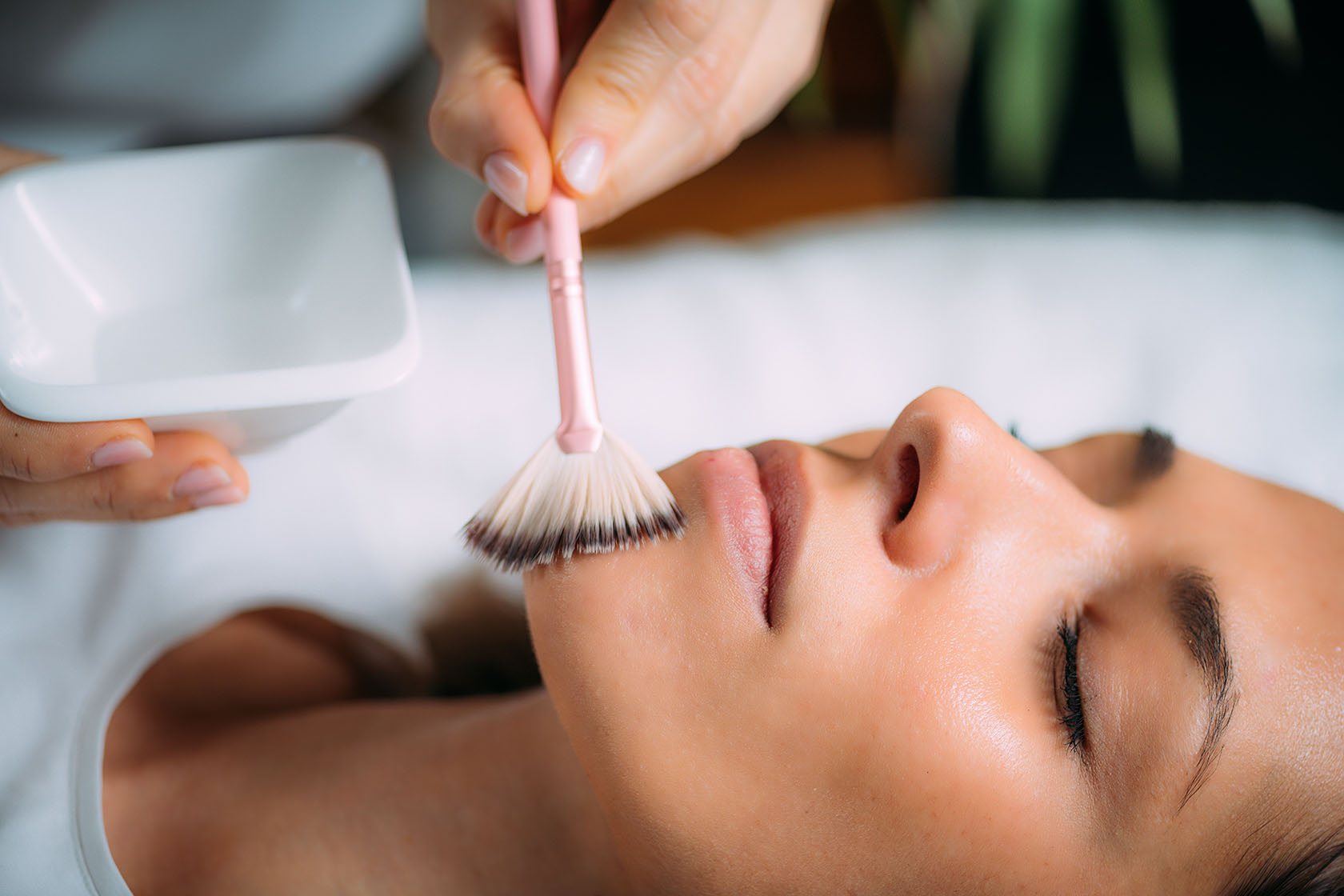
As we age, our skin gets along in years, losing its firmness and freshness, and wrinkles appear. Long-term quality cosmetic care is available only at a beauty salon, while cosmetic procedures at home may harm delicate skin. Licensed beautician Yolanda Abreu will tell you about the top five facial treatments.
Chemical peels
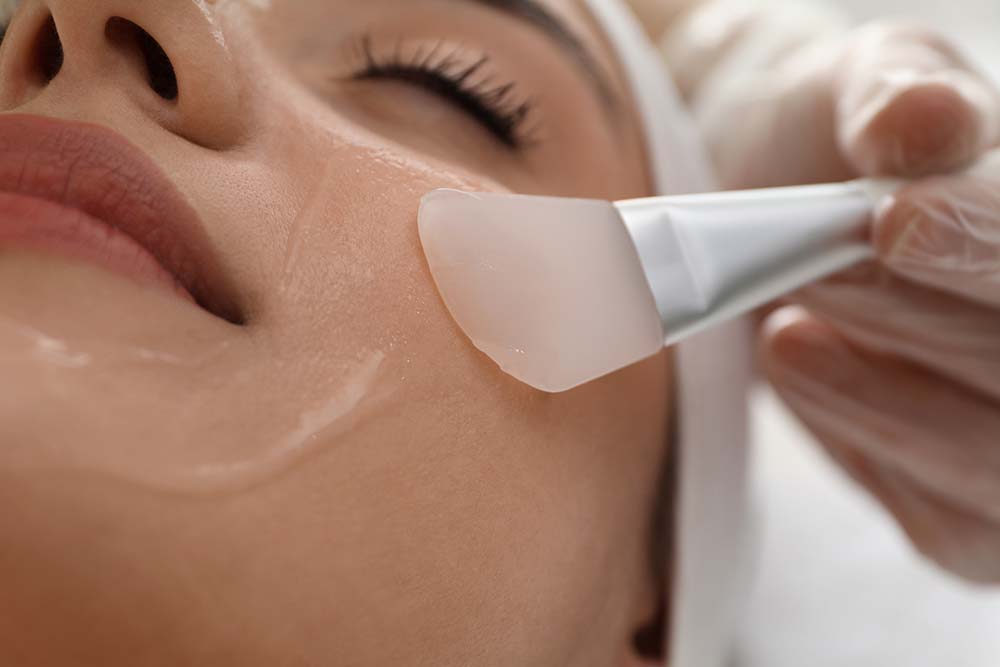
Chemical peels are a skin cleansing procedure with acids; they vary depending on the depth:
- Superficial: The beautician uses the most common acids – glycolic, pyruvic, almond, or lactic, – penetrating only the keratinized layers of the epithelium and dissolving the dead cells on the surface. There is no redness or flaking after it, so you can get this treatment every one or two weeks. Typically, a full course includes five to six treatments.
- Sebum secretion decreases
- Acne becomes less active
- Small freckles brighten
- Flaking smooths out.
- Medium: The beautician uses TCA (trichloroacetic acid) or salicylic acid, reaching the basal membrane, which is the last layer of the epidermis. Old dead cells in the upper layers are resorbed, and the acids activate the regeneration process in the deeper layers of the skin: new cells are formed, which are responsible for skin hydration and elasticity, and old keratinized cells gradually peel off. The recovery after such a peeling takes one or two days. You may get this treatment again in one year at the earliest.
- Remove any pigmentation or vascular spiders
- Smooth out slight wrinkles or bumpy surface
- Brighten circles or reduce eye bags
- Moisturize and refresh the skin.
- Deep: The beautician uses substances containing phenol, penetrating the deepest layers of the epidermis and reaching the upper layers of the dermis. The cleansing is performed under anesthesia in a hospital setting, with several months for the recovery. During this period, the skin is completely regenerated. The result is similar to a facelift, but the procedure can be repeated two to three times in a lifetime, with a break of more than a year. People under 45 should avoid getting this treatment.
- Deep wrinkles smooth out
- Deep pigmentation or scars are removed
- Skin becomes more elastic; flabbiness and sagging are gone.
Stages of chemical peel
- Face cleansing: The beautician removes sebum (fat secreted by the sebaceous glands), impurities, and makeup using gentle products to treat the eye area first. Then they apply a glycolic acid solution to clean deeper layers of the epidermis.
- Applying the acidic solution: The beautician applies the solution to the more delicate areas of the face last, leaving small gaps in the areas of the upper and lower eyelids around the eyes.
- Solution holding: Takes from ten minutes to an hour. The beautician determines the exact duration of this stage.
- Removing the solution: The beautician rinses the solution with a lye water after a set time or when burning sensations occur.
- Face washing: Is needed to flush out the residue of acid and neutralizing solution.
Deep pore cleaning
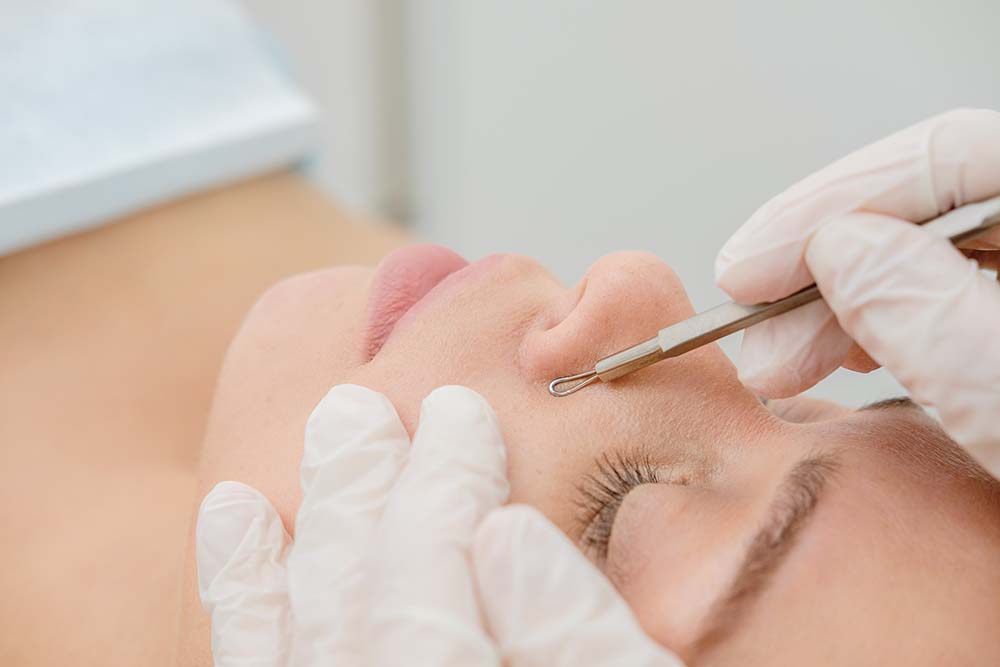
This procedure is often referred to as a manual treatment. The beautician cleanses the skin of black spots and pus using sterile metal spoons, threads, or other special tools.

- Enlarged pores
- Acne or comedones
- Increased sebum secretion
- Dull or loose skin.
Stages of deep pore cleaning
- Face cleansing: The beautician washes off makeup and cleanses the face of sebum or other impurities.
- Pore opening: The beautician uses a steam bath; the pores dilate due to the increased temperature, the blood flow to the skin increases, and the epidermal cells receive nutrients more actively.
- Cleaning the skin with hands: For this purpose, the beautician uses gloves or special tools. This method allows for removing dirt from even the most hard-to-reach areas.
- Treating the face: The beautician treats the facial skin using an antiseptic to eliminate the risk of new contamination and applies a soothing mask.
- Closing the pores: The beautician applies a pore-closing cream with SPF protection to prevent impurities from getting in.
A slight redness may remain after this treatment; it will go away in one or two days.
What are the benefits of getting a facial cleansing at a beauty salon?
- The beautician works using a special light; it helps to detect even the slightest imperfections.
- They also use a gentle steam treatment to open the pores.
- The face is treated with an antiseptic after cleansing; it helps to avoid infection and contamination.
- Bactericidal solution and cream, which clo ppse the pores, are applied to the face.
Microdermabrasion
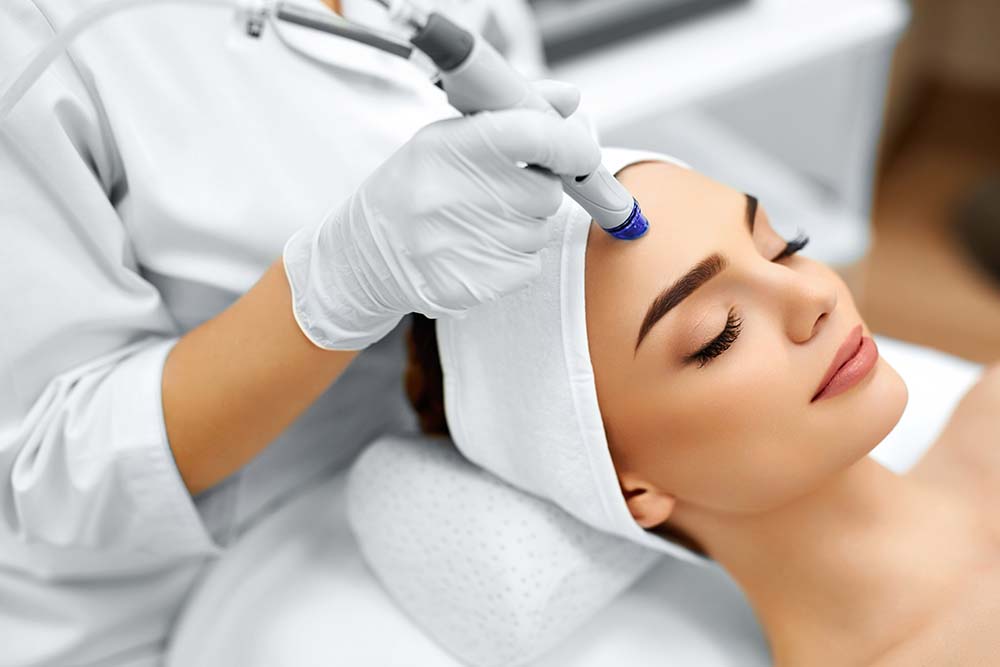
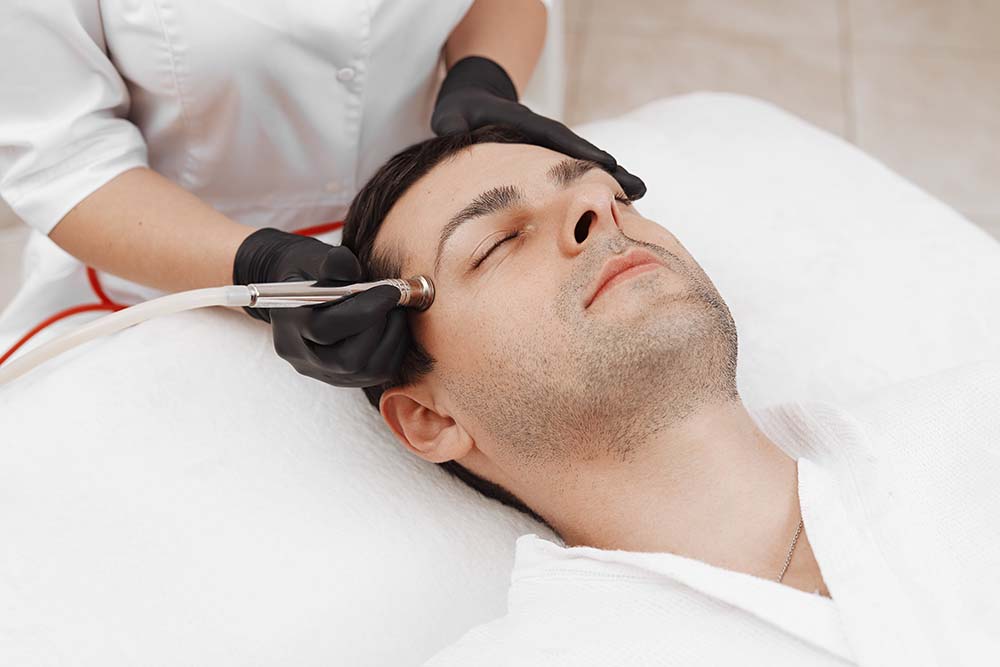
Microdermabrasion is a method of cleansing the skin using microcrystals: a powder of small particles is delivered under pressure using a special nozzle; these particles take the form of snowflakes or stars and are fixed on the keratinized cells of the epidermis; the vacuum nozzle then draws them together with the dead scales; finally, aluminum microcrystals or diamond particles are used for cleansing.
- Smoothing out wrinkles
- Brightening pigmentation and evening out the skin tone
- Restoring elasticity and removing small scarring, scars, or postacne
- Correcting the enlarged pores
- Reducing acne
- Brightening small tattoos or permanent makeup.
The depth of cleansing varies:
- Superficial cleansing: This type of treatment is gentle and helps to even out the skin tone and remove keratinized particles. Beauticians recommend three to five procedures at intervals of 6 to 10 days.
- Medium: This type of treatment increases the power of the vacuum and the pressure under which the particles are delivered. It helps to get rid of fine lines and wrinkles. A course of six to eight treatments at intervals of 7 to 14 days is optimal.
- Deep: The device works at a higher power level during this type of treatment. Recovery may take up to a week; during this period, the epidermis is actively exfoliated. It eliminates scars, postacne, or hyperpigmentation. A course of eight to ten treatments at intervals of 7 to 14 days is optimal.
Stages of microdermabrasion
- Preparing the facial skin: The beautician cleanses the face of makeup and dirt; then they apply a solution that softens the epidermis.
- Starting the treatment: The beautician gradually changes the power level of the device. This stage lasts 20 to 40 minutes, depending on the degree of resurfacing.
- Nourishing the skin: A mask or cream with a soothing effect is applied to the face.
The session can be repeated every three months.
HydraFacial
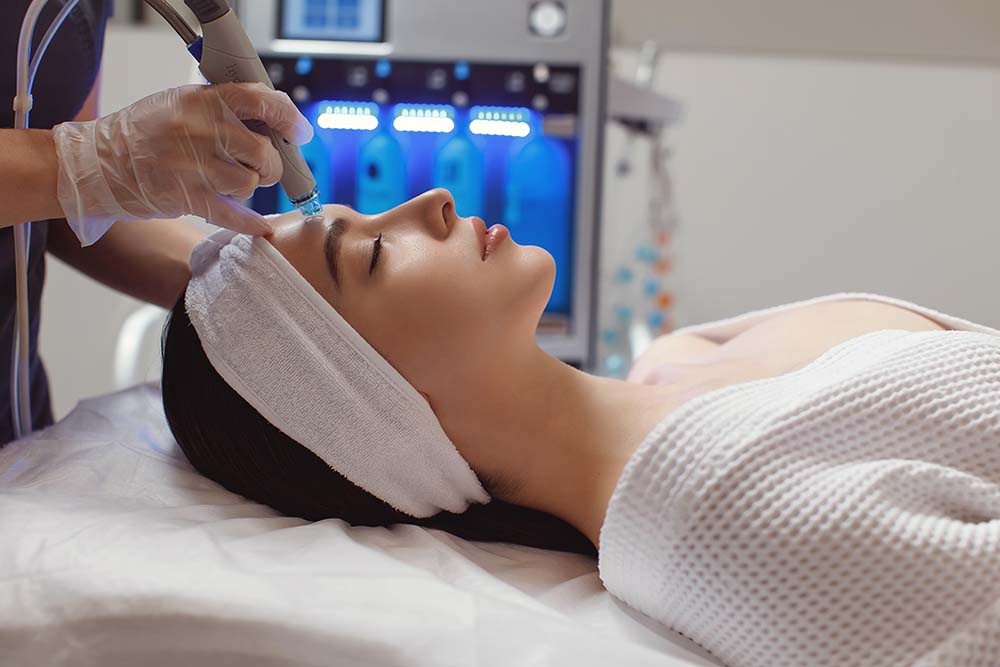
This method combines vacuum cleansing, microparticle peeling, and moisturizing using various serums. The skin is not traumatized during the procedure. The effect is noticeable right after the first procedure, but for long-lasting results, cosmetologists advise going through a course of five to ten procedures at intervals of 14 days (so as not to damage the blood vessels).
- Brightening pigmentation
- Cleansing the pores
- Correcting the enlarged pores
- Getting rid of flaking or closed comedones
- Moisturizing the skin, restoring the elasticity, and evening out the tone
- Dealing with ingrown hairs.
It is ideal if you need a quick result without a long recovery time. That’s why this method is often used by men or women before important events.
Stages of HydraFacial
- Preparing for the procedure: The face is cleansed of makeup, dirt, or sebum.
- Diamond microdermabrasion: Fine particles gently exfoliate keratinized cells of the epidermis.
- Application of the first serum (standard stage): The beautician uses Activ-4, which loosens the top layer of the epidermis so that other serums can penetrate the skin more easily.
Active ingredients:- Glucosamine: Exfoliates, forms a protective barrier, retains moisture, and smooths wrinkles.
- Algae extract: Removes toxins from the skin, moisturizes, nourishes it with vitamins and minerals.
- Lactic acid: Dissolves dead cells of the epidermis, smoothing out wrinkles and reducing the risk of comedones.
- Acid peeling for oily skin (additional stage):
The beautician uses GlySal™. Active ingredients:- Glycolic acid: Exfoliates dead cells, dries inflamed areas, and narrows pores.
- Salicylic acid: Reduces sebum secretions and promotes regeneration of epidermal cells.
- Vacuum cleaning (standard stage):
Gentle vacuum cleaning with Beta-HD™. Active ingredients:- Honey extract: Soothes sensitive skin, moisturizes, and stimulates cell regeneration.
- Salicylic acid: Dries inflammatory elements and has antibacterial properties.
- Meadowsweet extract: Has a bactericidal effect, narrows pores, and reduces inflammation.
- Anti-aging therapy (additional stage):
Serums are selected individually:- DermaBuilder™: Rejuvenates, prolongs the effect of Botox.
- CTGF™: Increases the production of collagen, improving skin elasticity, and accelerates cell regeneration.
- Britenol®: Is used to combat pigmentation.
- Nourishing the epidermis and dermis (standard stage):
Application of Antiox+™. Active ingredients:- TonePerfect™: Includes red algae extract, evens out skin tone, and brightens pigmentation.
- Horse chestnut extract: Removes toxins and promotes collagen production.
- Green tea extract: Soothes and heals.
- Arnica extract: Relieves swelling or redness and decreases the secretion of sebaceous glands, reducing acne.
- Peptide complex Cu PCA, Mg PCA, Zn PCA: Increases the production of collagen, improving skin elasticity, and prevents new wrinkles.
- Moisturizing (standard stage): The beautician applies moisturizing cream with SPF protection after the procedure.
Botox Filling
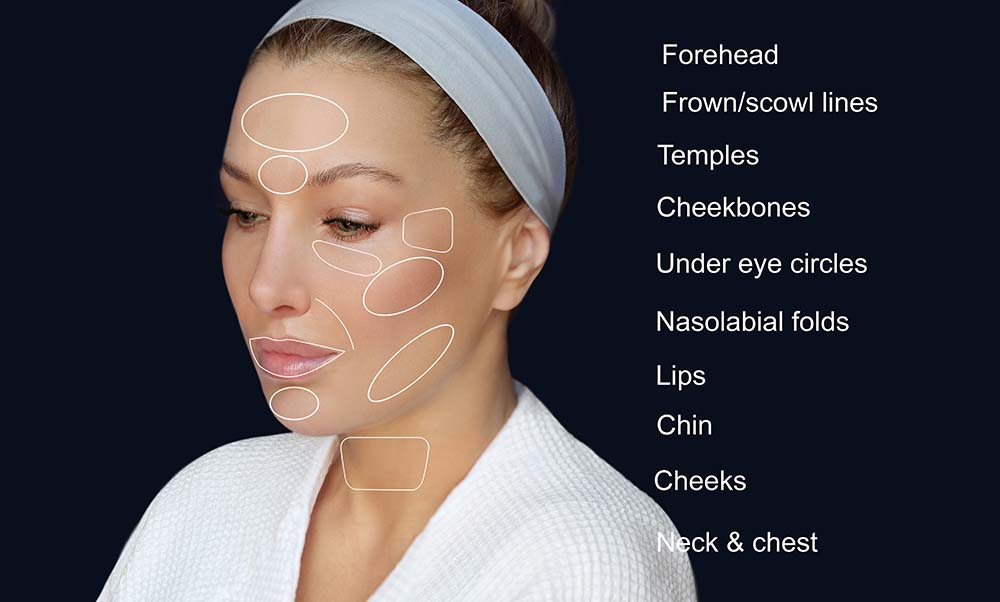
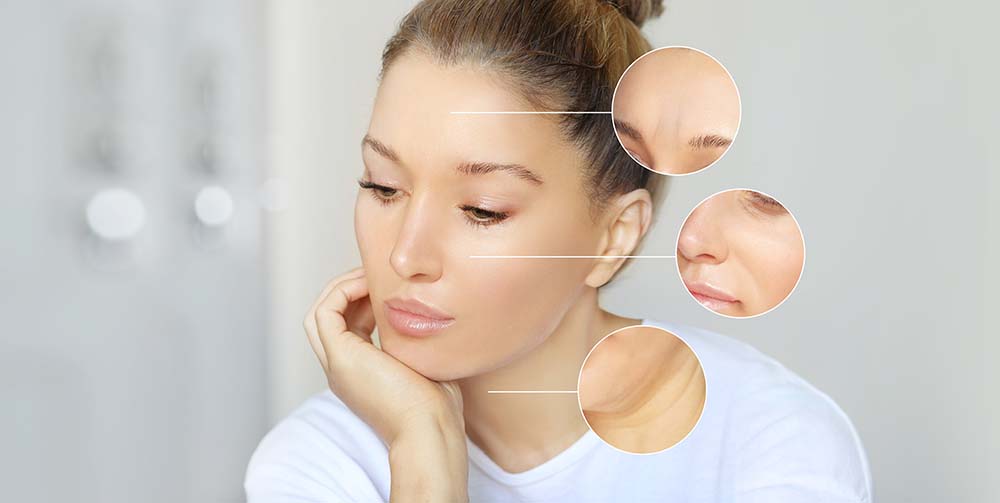
A procedure to inject Botox into the wrinkle areas. Botox is a neurotoxin; it blocks the nerve signal that goes to the muscles, which prevents them from contracting and puts them to rest. This helps to smooth out expression lines and wrinkles.
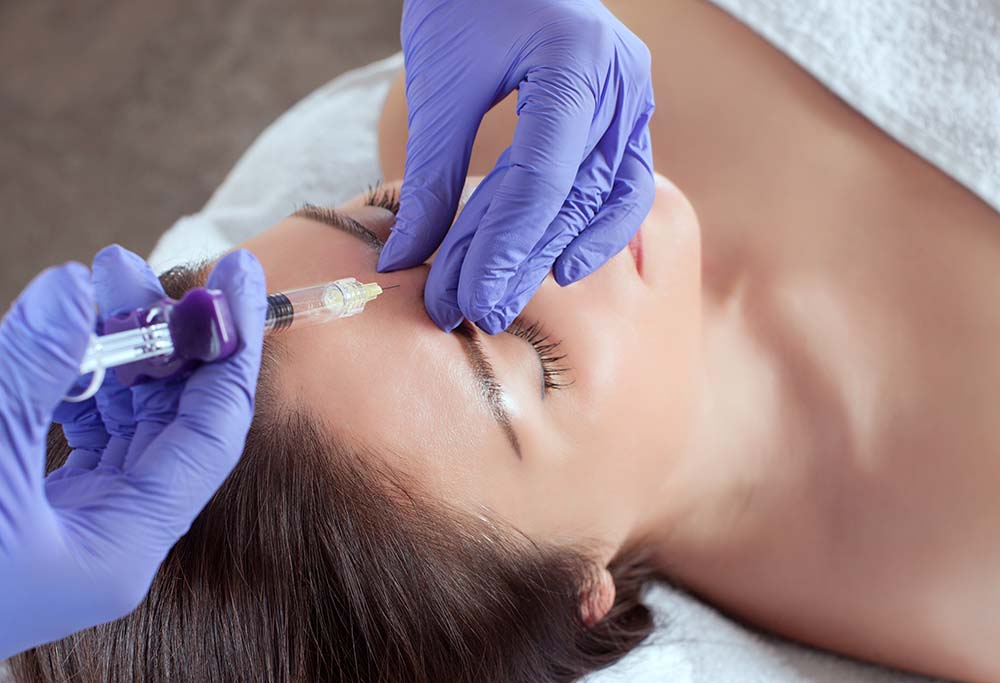
- Getting rid of deep or surface wrinkles
- Refreshing the skin tone
- Correcting facial features.
Stages of Botox filling
- Solea Brickell Spa is a licensed medical rehabilitation center.
- We use FDA-approved materials, i.e., they are all tested by scientists and are completely safe and effective.
- Procedures are performed by experienced beauticians, who analyze each case individually and consider the wishes of the client.
- When performing cleaning or injections, the beauticians observe all safety requirements, so the risk of complications is minimal.
- Preparing the skin: The face is cleansed of makeup, dirt, or grease.
- Anesthesia: The beautician applies an anesthetic ointment; it begins to work in 30 to 60 minutes.
- Introducing the solution: Botox is injected through a syringe with a needle or cannula. The amount to be injected depends on the depth of the wrinkles and the result the patient wants. The patient feels no pain, only a slight tingling sensation.
- Repairing the soft tissue: A cold compress or cooling gel is applied to the affected areas to prevent swelling.
- Consultation: The beautician gives recommendations to the patient and tells them what should and should not be done after the procedure.
The effect begins to appear in two to three days; the final result is visible in a week. After 3 to 6 months, the muscles gradually recover to their former state and the procedure can be repeated.
- Solea Brickell Spa is a licensed medical rehabilitation center.
- We use FDA-approved materials, i.e., they are all tested by scientists and are completely safe and effective.
- Procedures are performed by experienced beauticians, who analyze each case individually and consider the wishes of the client.
- When performing cleaning or injections, the beauticians observe all safety requirements, so the risk of complications is minimal.

